The new secondary user study focuses on delving deeper into users’ perceptions, reactions, and behavioural patterns of noise, which will provide substantial support for refining my project.
Selection of Methodology :
I chose questionnaires and semi-structured interviews as the primary data collection methods. This combination was able to balance the advantages of both quantitative and qualitative data:
- Questionnaire surveys enable the rapid collection of a large amount of data, providing a statistical basis for analyses to understand users’ general perceptions of and reactions to noise.
- Semi-structured interviews reveal detailed attitudes and behaviours of users through in-depth personal narratives, providing deep insights that will help me understand aspects of the problem more precisely.
Such a research methodology will help me gain a more comprehensive understanding of how users perceive and react to noise.
Questionnaire and interview design:
When designing the questionnaire, I developed three sets of questions to target different groups of users, taking into account their varying sensitivity to noise. I also designed a pre-questioning session to ensure that users would find the most appropriate set of questions.
Design and logic of the pre-questioning session:
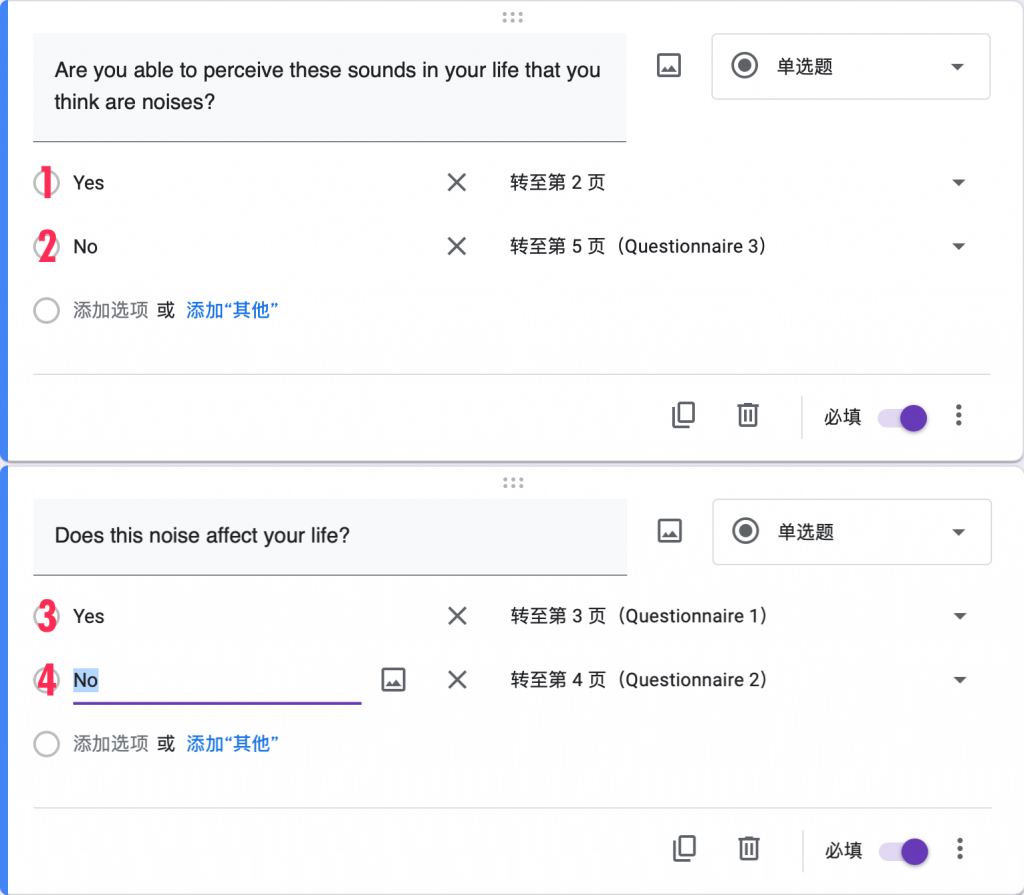
Users who choose “1+3″ will answer the question set 1, users who choose “1+4″ will answer the question set 2, and users who choose “2″ will answer the question set 3.
The answers to these pre-questions can initially reflect the user’s living environment, region, city, etc., and, to a certain extent, reveal the participants’ subjective perception of noise.
This design approach helped users find the most suitable question sets and enabled me to understand the differences between different target groups better.
And for the interview section, I chose the semi-structured approach, with the interview questions expanded from the three-question set of the questionnaire. Before the start of each interview, I reiterated the study’s ethical considerations. I also ensured that each participant had been fully informed about the study and had signed an informed consent form.
Additionally, all interviews were conducted online to ensure that the researcher and the participant remained comfortable communicating. With the participants’ consent, the interviews were audio-recorded and transcribed, and the data were then collated for subsequent analysis.
Such processing ensured the study’s efficiency and ethical standards while also improving the quality of data collection and the ease of subsequent analysis.
Sample selection and data processing:
Questionnaires:
In terms of sample selection, I endeavoured to ensure that the sample was diverse, covering a range of ages, occupations and areas of residence, to obtain comprehensive and representative data.
Therefore, the questionnaire was randomly distributed through social media platforms, and 96 valid responses were received. Although the digital divide may have limited the age limit of the sample, this maximised the randomness of the sample.
Data processing:
Data were collated using descriptive statistical analysis to support subsequent intervention design.
Key evidence:
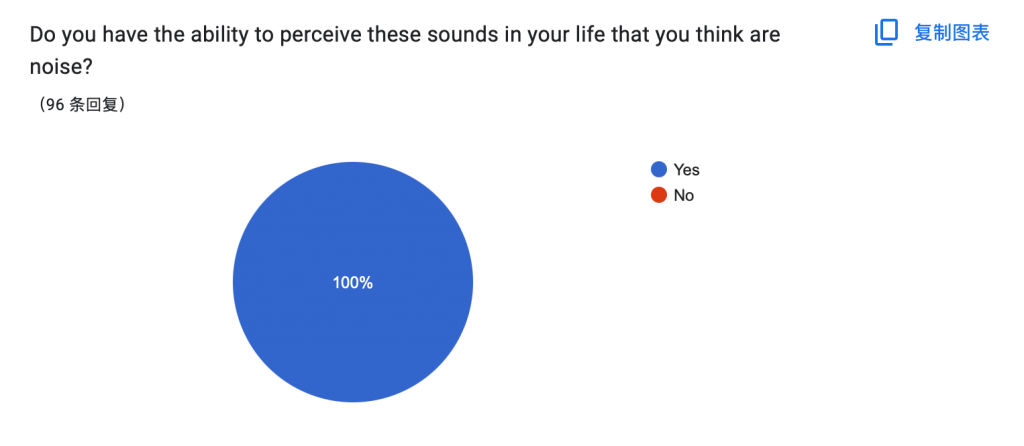
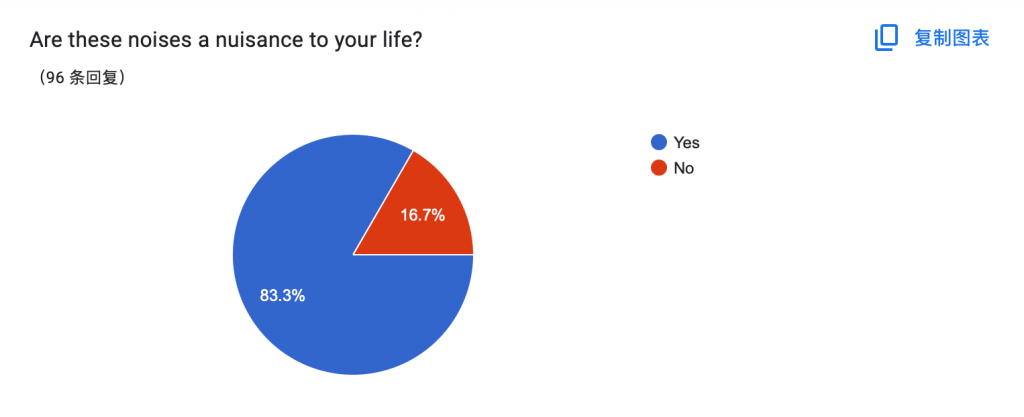
Interviews:
The selection of interviewees also ensured a diverse sample, with participants covering different user groups, countries of residence, genders, and occupations, including three ‘expert’ interviewees from the music and audio industry.
Interviewees:
- Wyukoh Wang: Psychiatrist, indie musician, Sydney, Australia
- Jacob Wang: Indie musician, mixer, DJ, Sydney, Australia
- Weiyi Zhang: Fashion Designer, Independent Clothing Brand Owner, London, UK
- Cheng Zhang: Interior Designer, Architect, Space Planner, London, UK
- Zhongjun Wang: Singer, director, Shijiazhuang, Hebei, China
- Zilong Li: Mixer, Mastering Engineer, Chengdu, Sichuan, China
Participants were informed about the study and signed an informed consent form before the interview. Screen recording of the interviews ensured complete recording and accuracy of the data.
Key evidences:
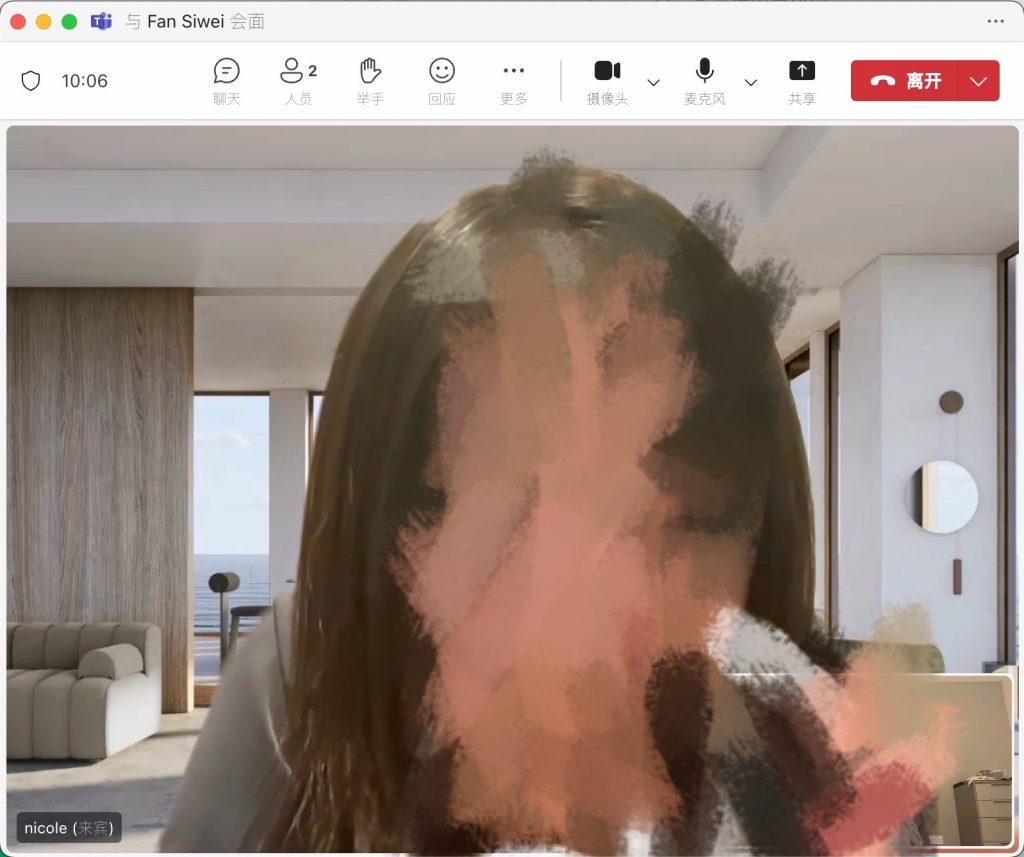
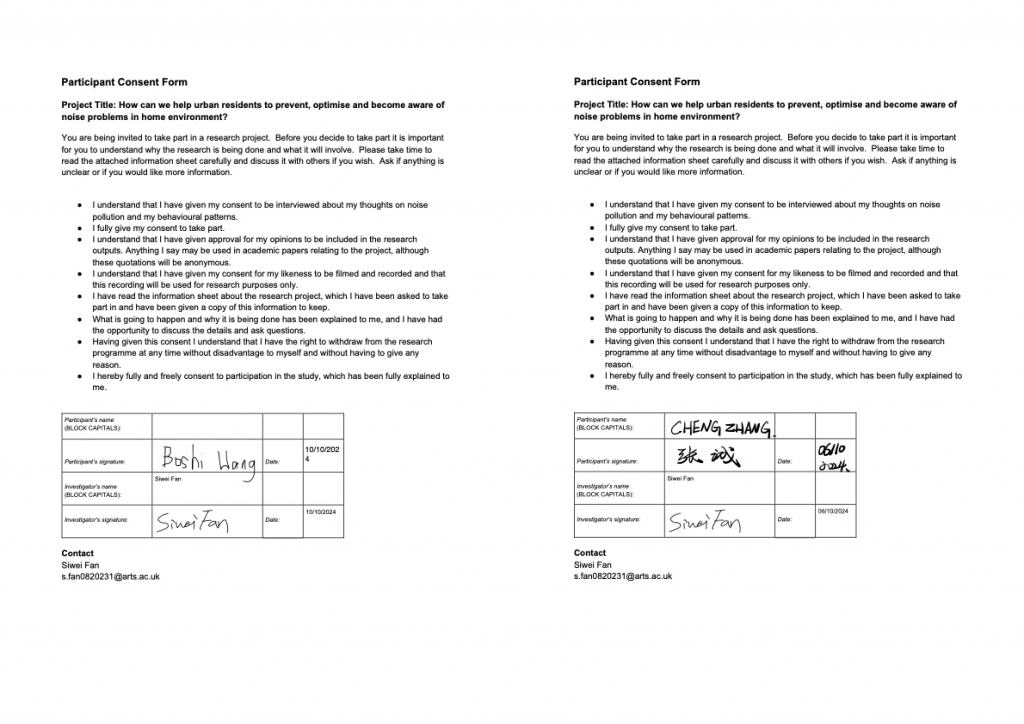
Data Processing:
Due to the study’s purpose, I only partially coded all interview data. And combined content and thematic analyses to extract core information.
Results of the study
Results of questionnaire analysis:
By analysing the collected questionnaire data, I found significant individual differences in people’s sensitivity to and ways of dealing with noise, and these differences are closely related to the respondents’ living environments, health conditions and daily habits. Here are the core findings:
Prevalence of noise problems: All of the respondents reported noise problems in their lives, with 80% of users having a subjective feeling of level 3 (out of a 5-level subjective feeling classification).
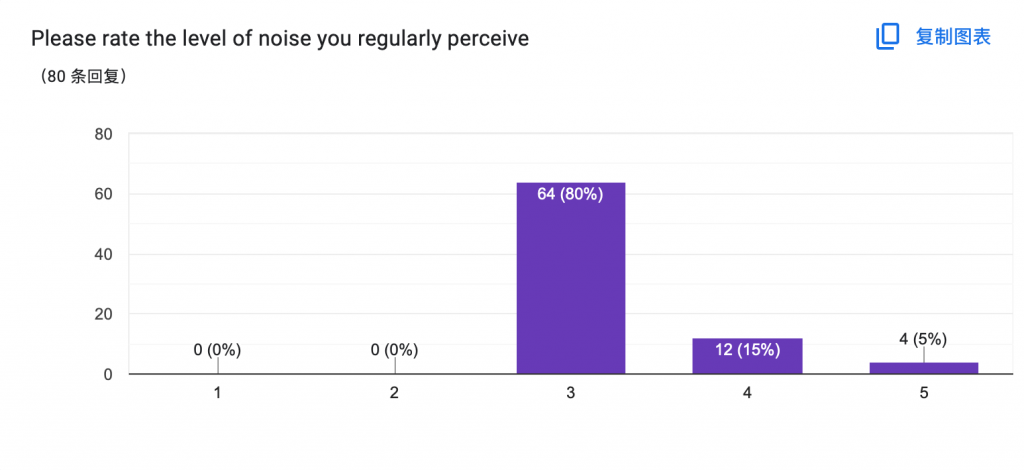
Noise sources:
The most common sources include home and traffic noise. These two types of noise generally affect the quality of life of urban residents.
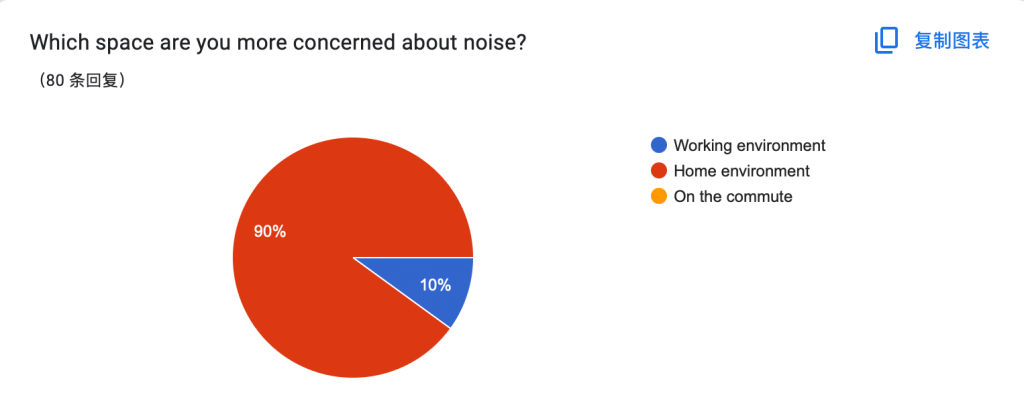
Limitations of coping strategies:
Although most users can accurately distinguish the noise source, their strategies for coping with noise problems are more limited. Most relied on passive tools such as noise-cancelling headphones or earplugs. Only a few users adopted more proactive and professional means, such as replacing curtains to optimise sound reflection coefficients. This shows that most users’ approach to noise management is still at the traditional passive level.
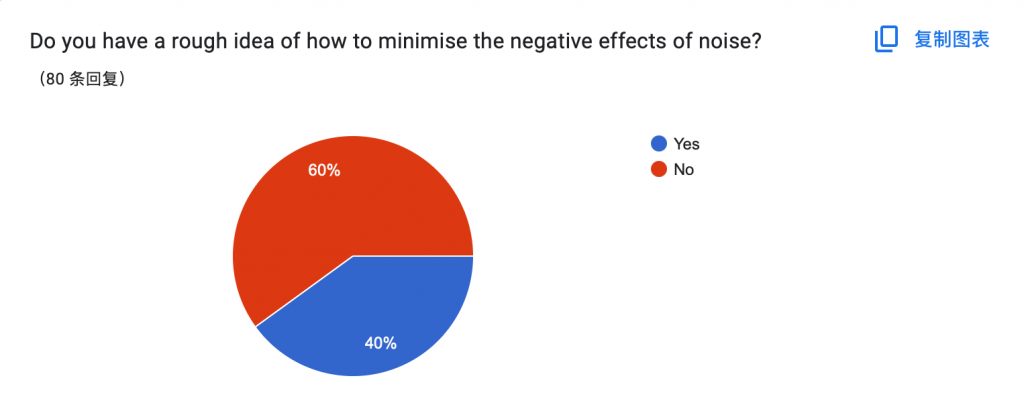
Results of interview analysis:
Noise Amplification Conditions:
Most interviewees indicated that noise in the home environment had the most significant impact on them. This is mainly because the subjective intensity of noise perception is closely related to the individual’s state. Especially when they need to work, study, or rest quietly, the negative impact of noise will be significantly amplified. This finding leads to the critical concept of ‘noise amplification conditioning’, which suggests that an individual’s environment and psychological state significantly affect noise perception.
Timeline Perspectives on Noise Prevention and Control:
Three experts in sound provide an in-depth understanding of noise prevention and control tools. They propose various professional strategies, including laying soundproofing materials and optimising house acoustics. In particular, the perspective of expert Wyukoh pointed out that ‘the cost of treating noise is low until it solidifies, for example, during the renovation phase. But once the noise has cured, the cost of treating it increases significantly.’ This observation reveals a timeline perspective on noise treatment, emphasising the timeliness of control measures and the importance of prevention over cure.
Addition of Noise Amplification Conditions:
The interviews further validated that various conditions, including psychological state, spatial layout, type of noise, etc, amplify the subjective perceived intensity of noise. Wyukoh pointed out that the impact of noise is attenuated while driving or commuting, which contrasts with the noise amplification in the home environment.
Takeaways and Improvements:
This secondary user study reveals new causal factors and vital elements of management, findings that are critical for designing new intervention strategies.
New causal factors:
- Cost of control
- Environment and timing of noise occurrence (noise amplification conditions)
- Time point of control
- Threshold of technical knowledge of tools
- Lack of noise literacy
- Hearing loss
- Low-level noise
- Low damage
- Noise masking, etc.
Possible entry points:
Controlling Costs and Timing:
The best time for noise management is usually before the noise problem solidifies. Effective noise management should occur early in the problem to minimise the cost and complexity of treatment at a later stage.
Noise Amplification Conditions:
Specific conditions, such as demand-quiet environments, significantly increase the negative impact of noise on individuals. Noise management strategies must consider the specifics of the environment and the individual’s state.
Specialisation and feasibility of tools:
While specialised management tools (e.g., acoustic optimisation and soundproofing materials) are practical, the threshold of technical knowledge must be balanced against the user’s practical ability.
This study has deepened my understanding of the complexity of noise issues. The secondary research findings will be combined to provide substantial evidence to support the design of the next phase of the intervention.
Additions:
Low-damage noise is an interesting point. In peer feedback, it was mentioned that noise is like smoking. People know it is harmful, but because the short-term harm is not apparent, people hardly pay much attention to it. It’s like getting a healthy smoker to realise the dangers of smoking and quit.